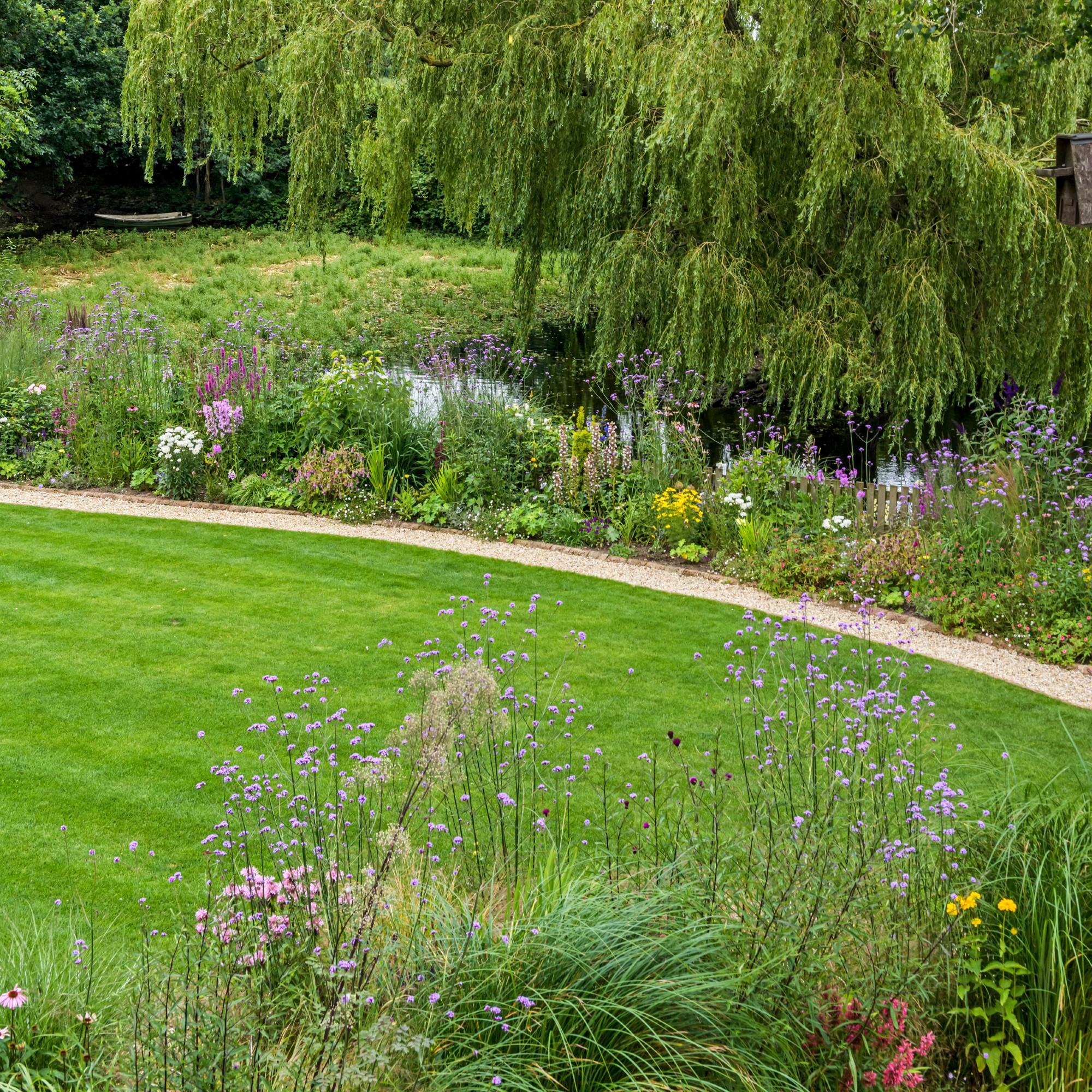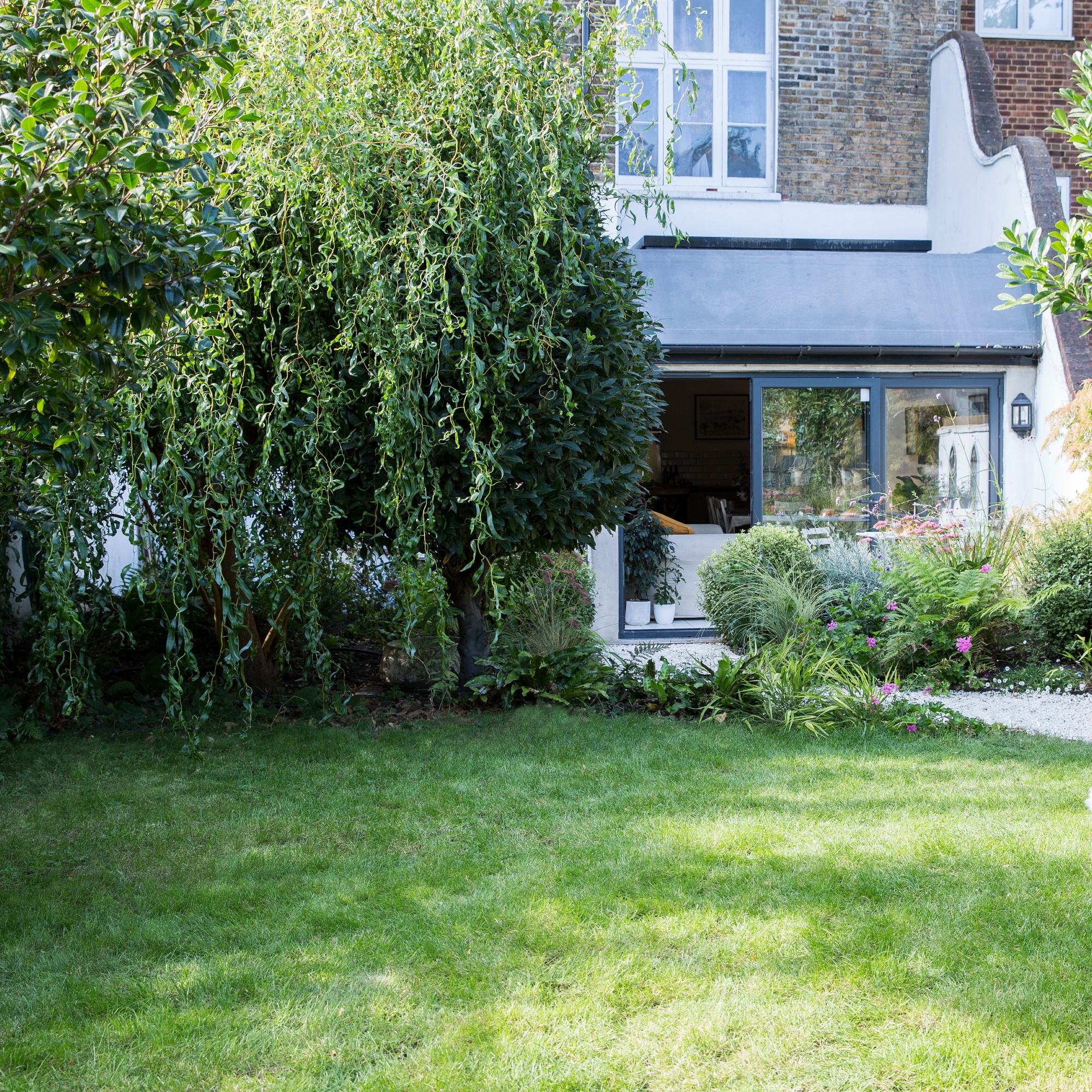March lawn care tips – what you need to do to take care of your lawn once winter’s over
Revive your lawn after harsh winter conditions


March is the perfect time to start tending to your lawn as winter slowly retreats. But if you don’t know where to start, we’ve rounded up some March lawn care tips to point you in the right direction.
You might be thinking about mowing your lawn, scarifying, fertilising, aerating and more, wondering if now is a good time to tackle these or whether you should wait. The health of your lawn’s grass is a fickle thing but our lawn care tips come expert-approved because we want to ensure your lawn is healthy and vibrantly green this summer.
So if that sounds like something you’re after, then read on to find out how to revive your lawn after the long and dreary winter months.

March lawn care tips
As the first month of spring, March is the time to start taking care of your lawn and bring it back to its former glory before the harsh winter temperatures hit.
‘In March, there’s plenty to be doing to get the lawn looking and feeling its best for the season ahead,’ says Peter Chaloner, managing director of garden machinery brand, Cobra.
What you might need
- Lawn mower like the Worx WG779E at Amazon
- Lawn scarifier and aerator like this one from VonHaus at Amazon
- Garden rake like this one at Amazon
- High nitrogen lawn fertiliser like this one at Amazon

1. Removing debris
‘Before anything else, clear the lawn of any debris,’ Peter says.
That’s right, clear the canvas before you start doing any more complicated procedures to it. You don’t want debris getting in the way.
Sign up to our newsletter for style inspiration, real homes, project and garden advice and shopping know-how
2. The first mow of the year
Get your best lawn mower at the ready because March is a good time for that first mow of the year. But timing it well and knowing how short (or long, rather) to cut it is crucial to the health of your lawn.
‘Wait for several dry days in March before mowing your lawn,’ recommends Guy Jenkins, consumer manager at Johnsons Lawn Seed. ‘Moisture can flatten grass blades, making it challenging to achieve a uniform cut. This can leave your lawn susceptible to pests and diseases.’
As well as having the right weather, the grass also shouldn’t be any shorter than 5 centimetres before you get mowing.
‘When the grass grows to a height of 5 to 8 centimetres (2 to 3 inches), it’s time for the initial spring mow,’ Guy continues. ‘Begin by lightly trimming the grass. During the first mow, avoid cutting more than one-third of the grass blade height.’

In his most recent blog post, Monty Don also recommends giving your lawn only a short trim. And to ensure that you don’t cut too much, there is a specific setting on your lawnmower to watch out for.
‘Most lawnmowers have an adjustable height level that raises the blades from the grass to prevent scalping, which can stress the grass, strip it of essential moisture and cause it to dry out,’ Peter warns. ‘So for the first mow, raise the height to the maximum setting as this will help stimulate grass growth and encourage the blades to thicken over time.’
3. Scarifying your lawn
You can scarify your lawn in March to rid it of any unwanted growth and debris such as thatch, but only as long as the weather reaches a certain temperature.
‘In early March, I definitely wouldn't recommend scarifying your lawn,’ says Steve Chilton, garden expert at LeisureBench. ‘However, in late March or early April, this could be a good time to, as long as the temperature is around 12°C or higher. If the temperature doesn't get consistently to this level, then I would hold off until it does.’
Guy continues, ‘Before scarifying, ensure the grass is short and dry by gradually mowing it down over a week or two.’
‘Scarifying your lawn in March can help rejuvenate it after the wet winter weather. Scarifying has various benefits, such as eliminating moss, thatch, and weeds that can compete with healthy grass for essential nutrients and soil moisture. These unwanted elements block light, water, space, and nutrients needed for grass growth.’

Steve is a passionate and knowledgeable garden expert with several years of experience within the field. As the director of LeisureBench, an industry-leading garden furniture company, Steve has developed strong expertise for all things nature and plants.

4. Aerating your lawn
Another one of Monty Don’s March lawn care tips is aeration - and March is a great time to aerate your lawn. Or as he called it, stick a fork in it and wiggle it about to help drainage and feed the grass. For this, you can either use a garden fork or rake or a powered aerator.
‘Following a long winter, lawns can become compacted, leading to yellow grass and weed growth. To revive your lawn and get it ready for the upcoming season, scarification and aeration are crucial,’ Peter says. ‘Aeration creates tiny holes in the soil, allowing air, water, and nutrients to penetrate the roots, promoting healthy and robust growth. If a manual rake is not powerful enough, electric-powered aerators have sharp and hollow tines that extract soil, creating small and tidy holes that welcome important nutrients, air and water in.’

5. Overseeding your lawn
March is also a good time when to overseed your lawn. But again, as long as the temperatures are warm enough for the seeds to germinate and start growing. Otherwise it’s a waste of time.
‘Any overseeding jobs can be assessed now, however, I wouldn't overseed until it starts to warm up a bit more,’ Steve says. ‘Remember, grass won't necessarily grow until temperatures reach around 5°C and above, so there's no point in planting grass seeds if they're going to be unable to grow.’
But if the weather has settled on a good, mildly warm temperature then you can get to overseeding your lawn.
‘For a dense and healthy lawn, fill in any bare patches with grass seed and regularly water the lawn to keep it wet,’ advises Petar Ivanov, gardening expert at Fantastic Gardeners. ‘To define the shape of the lawn, use an edge trimmer or a shovel.’

Petar Ivanov is one of the company's top-performing experts and manages over six teams of gardeners, delivering stunning landscape results and fostering a deep connection with nature through his work.

FAQs
What is the best fertiliser for grass in March?
‘We recommend avoiding fertilising your lawn in March, as it may cause damage to the tender grass during its early stages of regrowth,’ Peter warns. ‘It’s better to wait until the grass gains some strength to absorb the fertiliser effectively, which can help it grow healthily during extreme heat.’
‘However, instead, you can use grass clippings as a natural mulch. Sprinkling a light layer of cuttings on your lawn after mowing helps lock in moisture and nutrients.’
But if you’re sure your lawn can take a layer of fertiliser, then this is the type to go for, according to Petar.
‘Apply a high-nitrogen spring lawn feed in late March if your grass needs a boost. This will promote strong growth to help the lawn recover after the winter. However, it's best to use the minimum amount necessary.’

Should I scarify my lawn in March?
Whether you can scarify your lawn in March or not is something even experts can’t quite agree on. So tread carefully.
‘Scarifying your lawn in March is generally too early,’ Petar warns. ‘If you have debris and moss on your lawn, it's normal to feel tempted to consider this task. However, wait until April when the grass will be more likely to recover.’
But late March might also be suitable as discussed above.
And this is all you can and need to do to take care of your lawn this month.

Sara Hesikova has been a Content Editor at Ideal Home since June 2024, starting at the title as a News Writer in July 2023. She is now also the Ideal Home Certified Expert in Training on Furniture, and so far has tested over 150 different sofas.
Graduating from London College of Fashion with a bachelor’s degree in fashion journalism in 2016, she got her start in niche fashion and lifestyle magazines like Glass and Alvar as a writer and editor before making the leap into interiors, working with the likes of 91 Magazine and copywriting for luxury bed linen brand Yves Delorme among others.